By Dan Weisz
A few weeks ago I learned about an owl family living in a residential neighborhood along the Tucson Mountains. What was fascinating was that the owls were nesting in a saguaro cactus. I arrived late one day to discover that there were three Great Horned Owlets still in the “nest”. Here’s one.
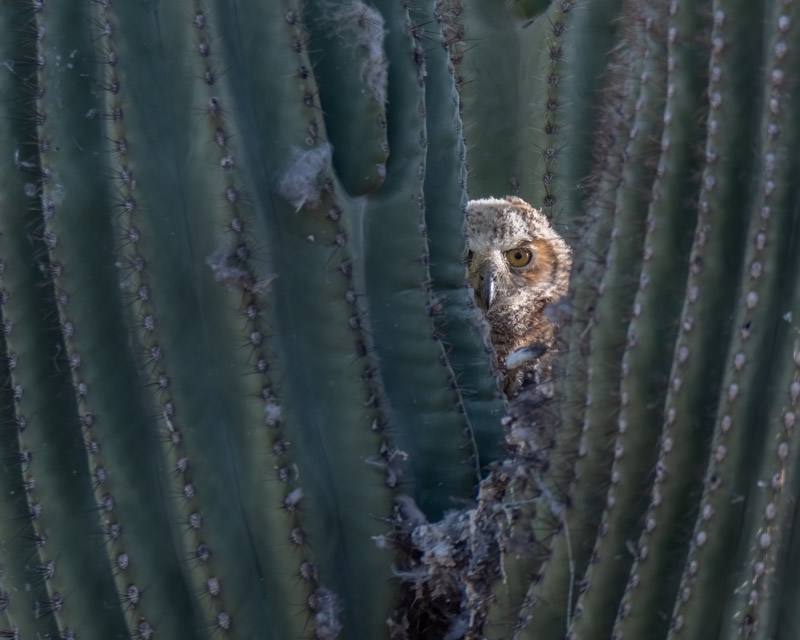
Walking around the saguaro, it seemed like every “window” into the center of the saguaro yielded a different owl. The lighting at the end of the day varied on each side of the cactus. The owlet above was in the shadow of the cactus but with the sun lighting up its face. Another owlet (below) was facing the sun.
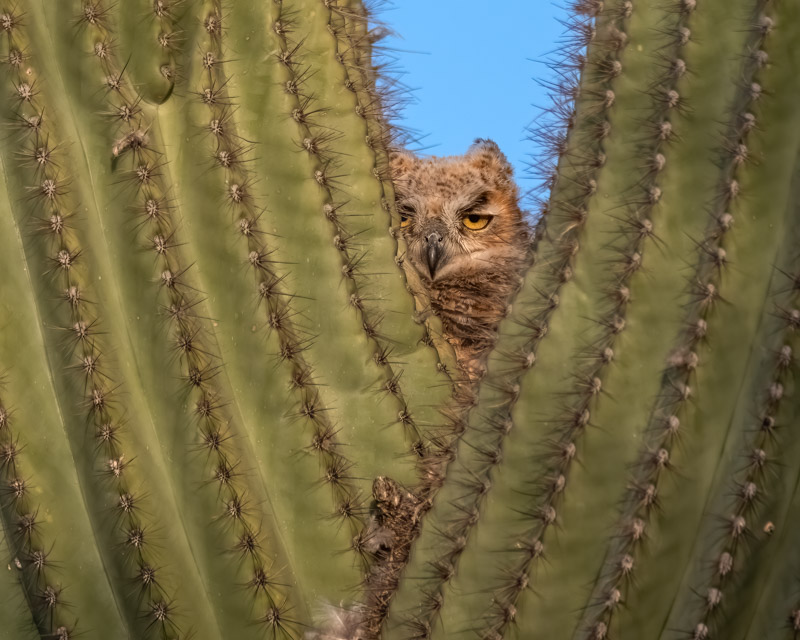
And yet a third owlet was facing north. Each of the three owlets still has some downy feathers on their head, but the feather tufts on their heads are appearing and they already have darker feathers along their bellies and sides.
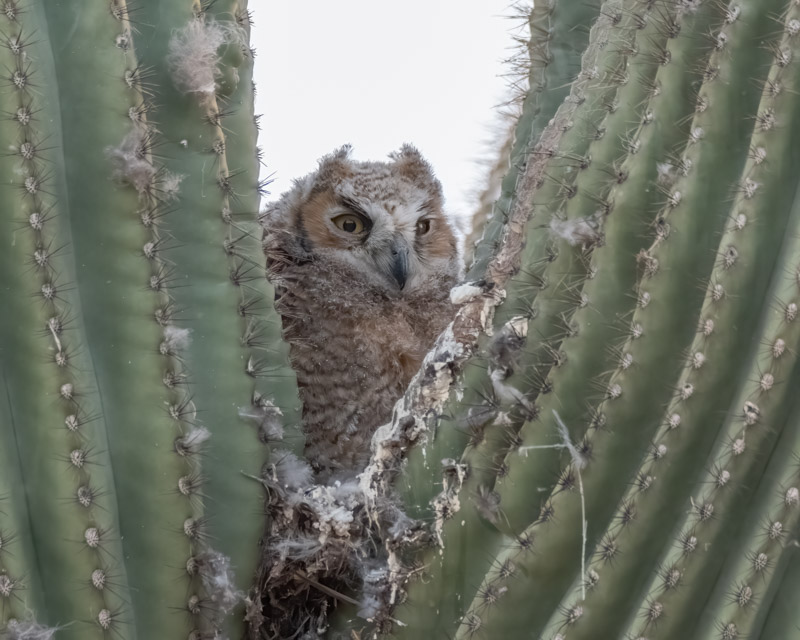
At one point that third owl looked right at me. All of my photos were taken at a good distance away from the saguaro so as to not stress the owl family. With a telephoto lens along with the cropping ability during processing of the photo, I can get these nice “portrait-style” shots.
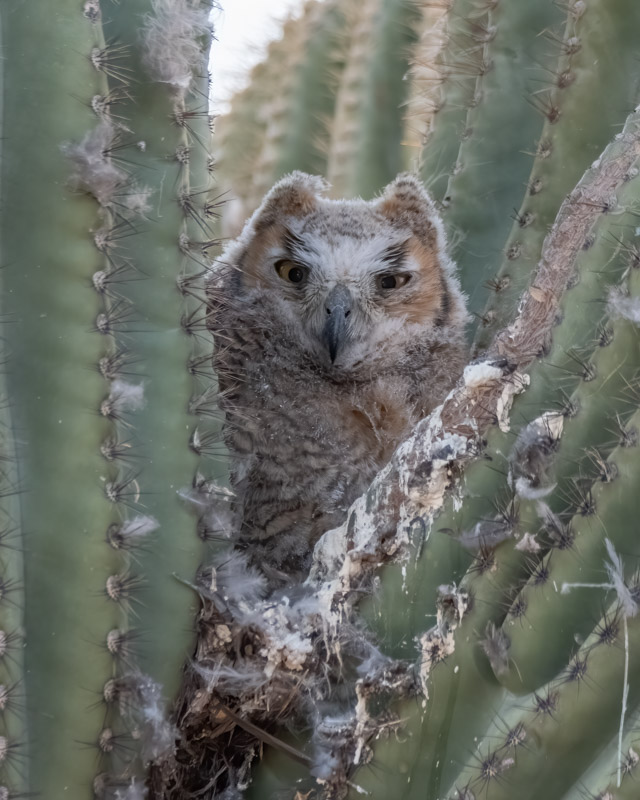
Three days later I returned in the morning to check the nest out. I found the mother Great Horned Owl in a mesquite tree across the road from the saguaro nest. At this stage, the mother owl will not remain in the nest. It is too crowded. In addition, if she were perched close to her little ones, they would be nagging her constantly for more food. Keeping a distance helps to keep her sanity. We know this is the mother owl based on the brood patch running up and down her breast feathers. That distinct line, or part, in her feathers shows where she lost feathers going into breeding season to enable her to have skin-to-egg contact and skin-to-hatchling contact of her young. (Because she is standing sideways, the brood patch (part) appears towards the left side of her body- her right.)
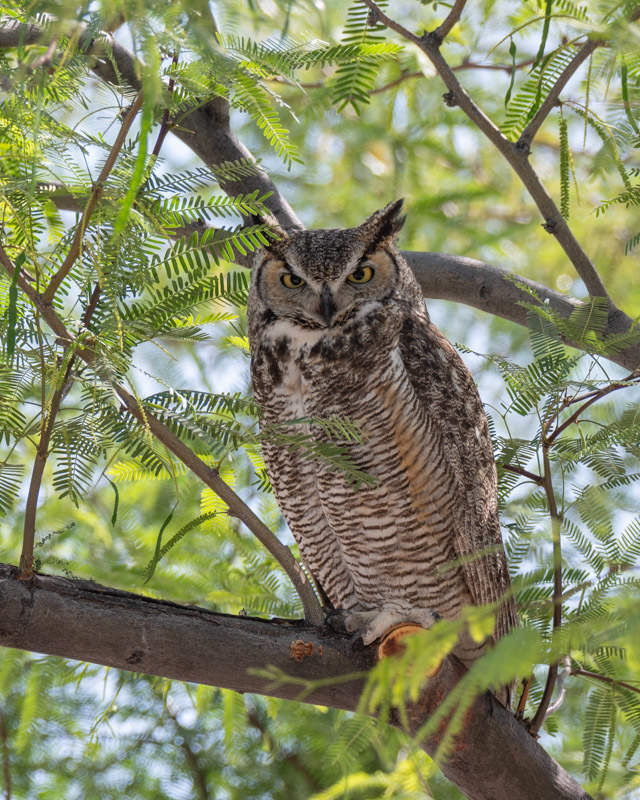
Here is mom’s portrait shot!
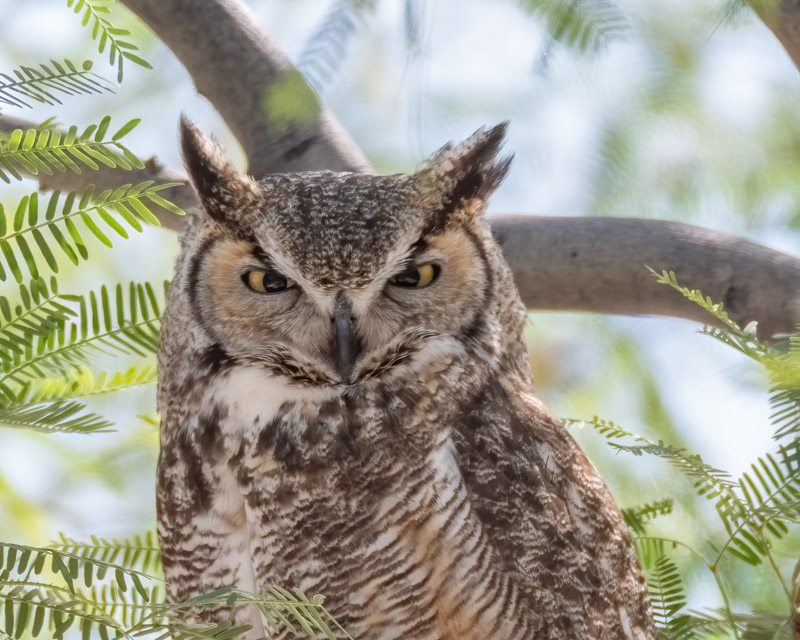
This photo gives a sense of the saguaro and “nest”. There are no actual nesting materials there. Great Horned Owls do not build nests. They either re-purpose and take over a large hawk nest from the previous year, or they may just lay their eggs on a suitable flat surface. This saguaro, with the central trunk missing, offers a great bowl to use as a nesting area. The “nest” site is sheltered from the sides and safe from predators.
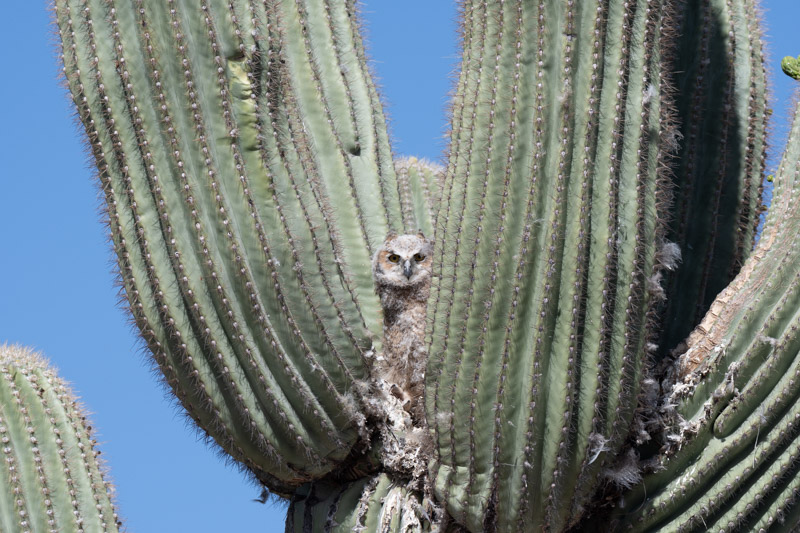
I returned three days later to discover that two of the owls had fledged, leaving the nest saguaro and joining their mother in the mesquite tree across the street. Here is one of the owlets to the side of mom. Great Horned Owls typically leave the nest at about six weeks. It will take a few more weeks for the young to become strong fliers and they will continue to live near their parents for a few months afterwards. During that time they will be fed while they learn to hunt and while they become proficient flyers.
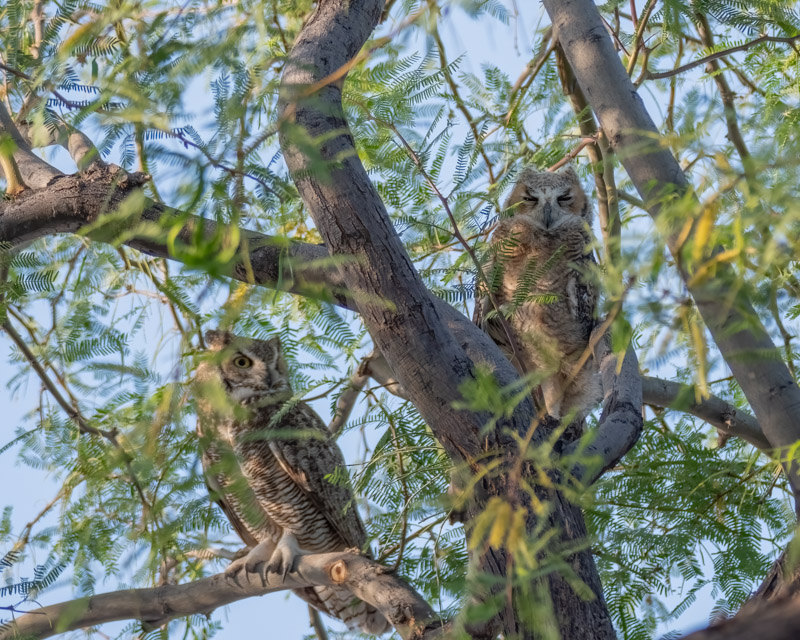
Here is one of the two fledged Great Horned Owlets. You can see that it still has some of its ‘baby’ downy feathers at the bottom of its belly. This bird already has the thickly feathered feet and toes typical of Great Horned Owls.
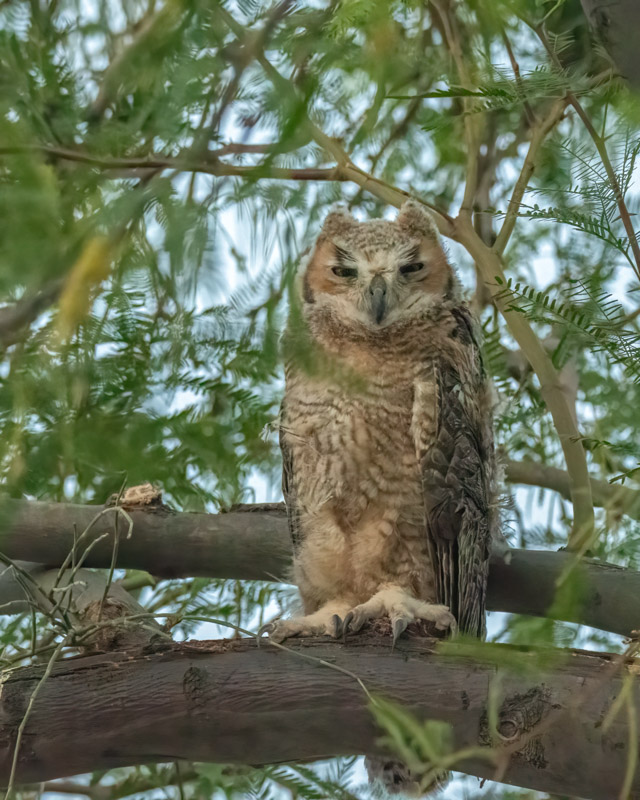
The last of the three owlets remained in the saguaro. As the sun set, it opened its eyes and looked across the street at its siblings and parent. I’m pretty sure it was wondering how they got over there and whether or not it had the skills or the will to make the leap too.
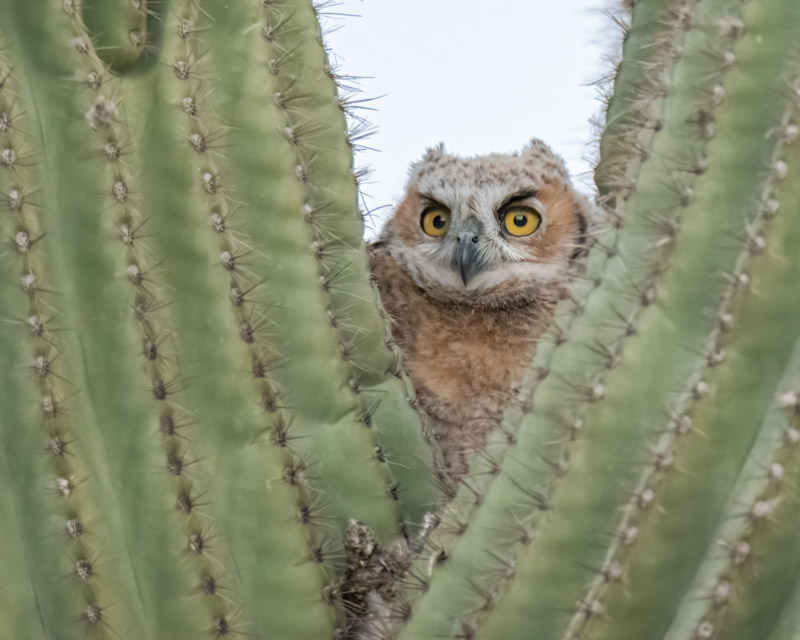
It looked away. Was it thinking or just staring off into the sunset? You can see the light of the sunset reflected in its eyes.
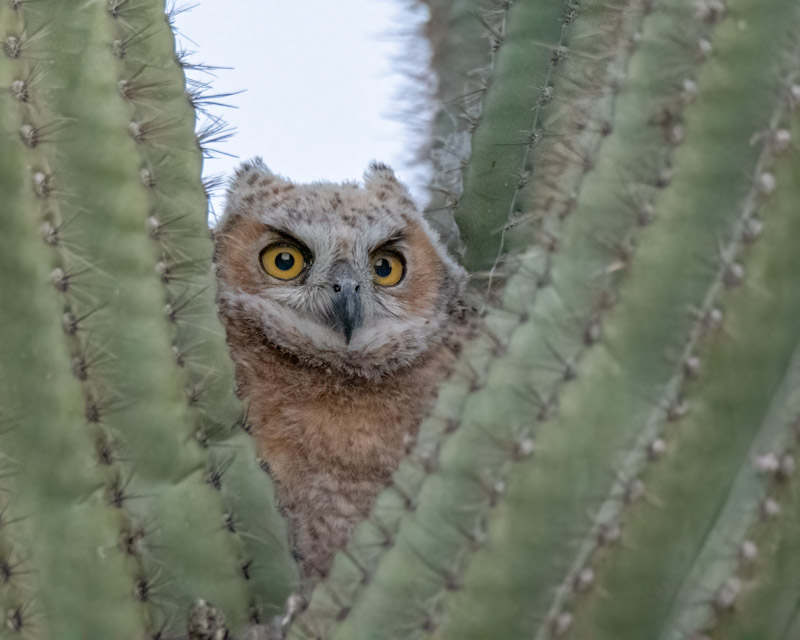
In the last rays of the sun, the owl stared directly at me.
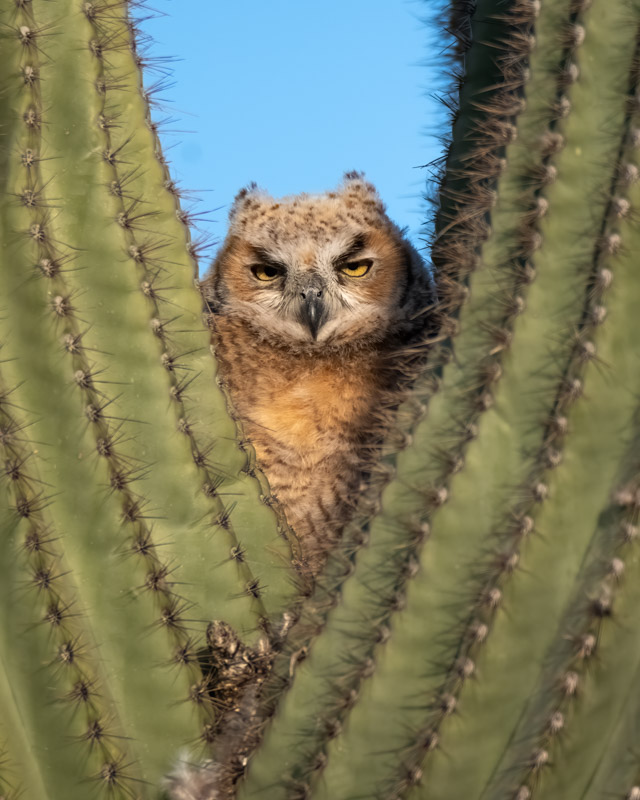
I like this final shot. I’m sure the owl had no special attitude but we humans like to think that owls are wise and are making judgments of us at all times. I don’t think this is happening, but still, that look…….
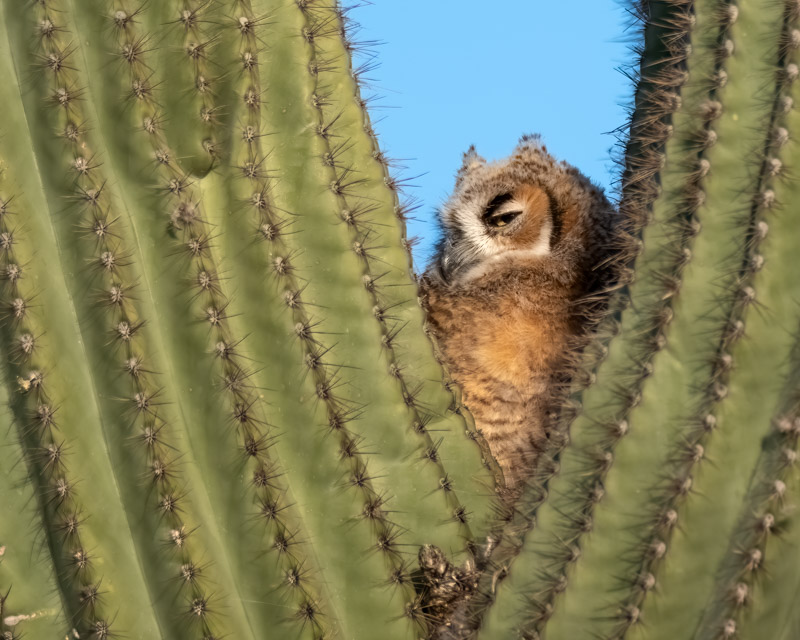
The next morning I received an email from the homeowner that the third owl fledged during the night and was sitting across the street in the mesquite tree with the rest of the family. The saguaro nest was now empty. The next phase of the Great Horned lives has now begun.
